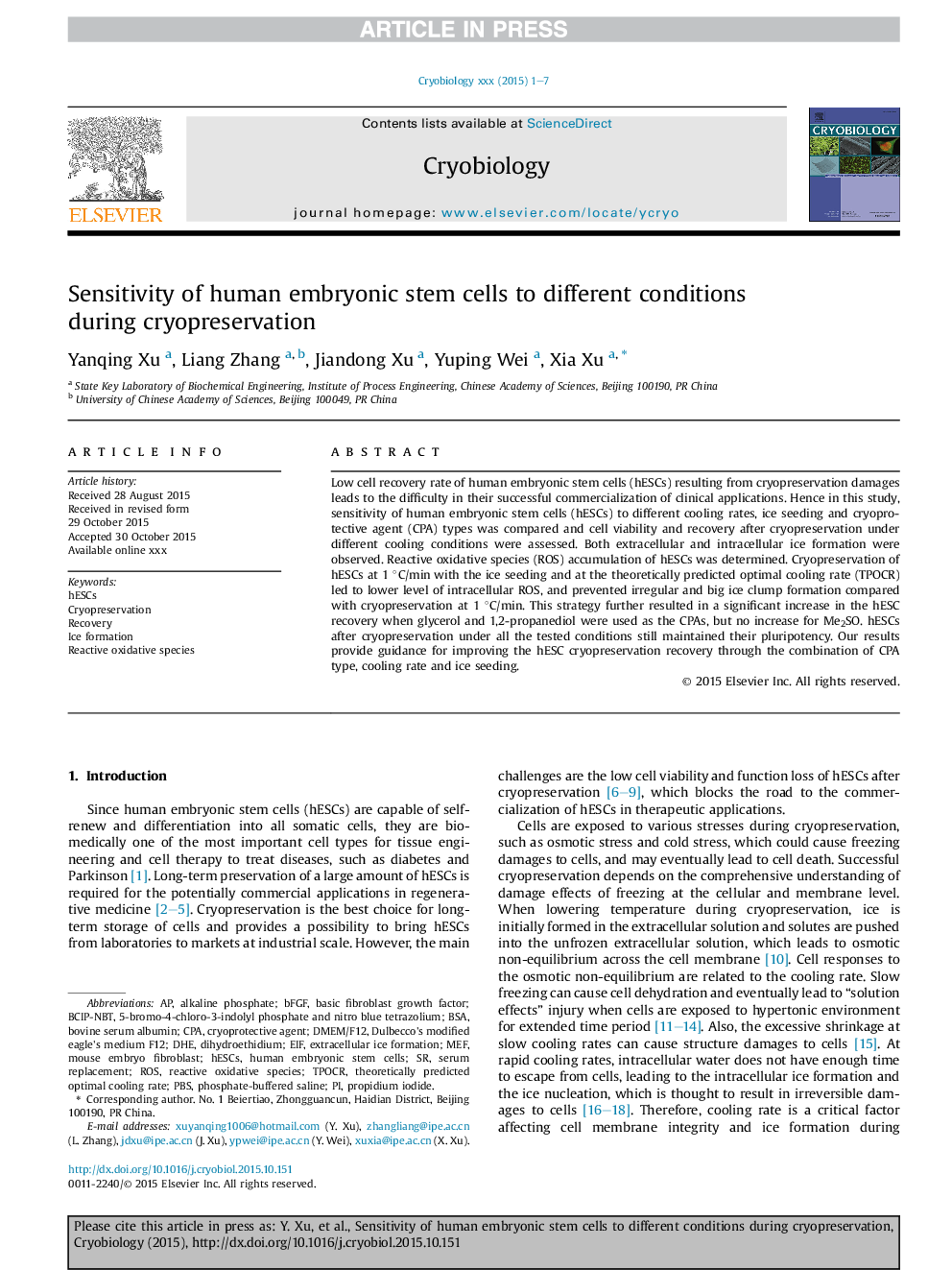| Article ID | Journal | Published Year | Pages | File Type |
|---|---|---|---|---|
| 10927680 | Cryobiology | 2015 | 7 Pages |
Abstract
Low cell recovery rate of human embryonic stem cells (hESCs) resulting from cryopreservation damages leads to the difficulty in their successful commercialization of clinical applications. Hence in this study, sensitivity of human embryonic stem cells (hESCs) to different cooling rates, ice seeding and cryoprotective agent (CPA) types was compared and cell viability and recovery after cryopreservation under different cooling conditions were assessed. Both extracellular and intracellular ice formation were observed. Reactive oxidative species (ROS) accumulation of hESCs was determined. Cryopreservation of hESCs at 1 °C/min with the ice seeding and at the theoretically predicted optimal cooling rate (TPOCR) led to lower level of intracellular ROS, and prevented irregular and big ice clump formation compared with cryopreservation at 1 °C/min. This strategy further resulted in a significant increase in the hESC recovery when glycerol and 1,2-propanediol were used as the CPAs, but no increase for Me2SO. hESCs after cryopreservation under all the tested conditions still maintained their pluripotency. Our results provide guidance for improving the hESC cryopreservation recovery through the combination of CPA type, cooling rate and ice seeding.
Keywords
PBSExtracellular ice formationhESCsbFGFMEFCPABSADMEM/F12eIFROSbovine serum albuminalkaline phosphateIce formationserum replacementdihydroethidiumRecoveryCryopreservationhuman embryonic stem cellscryoprotective agentbasic fibroblast growth factormouse embryo fibroblastPhosphate-buffered salineDHEPropidium iodideReactive oxidative species
Related Topics
Life Sciences
Agricultural and Biological Sciences
Agricultural and Biological Sciences (General)
Authors
Yanqing Xu, Liang Zhang, Jiandong Xu, Yuping Wei, Xia Xu,
